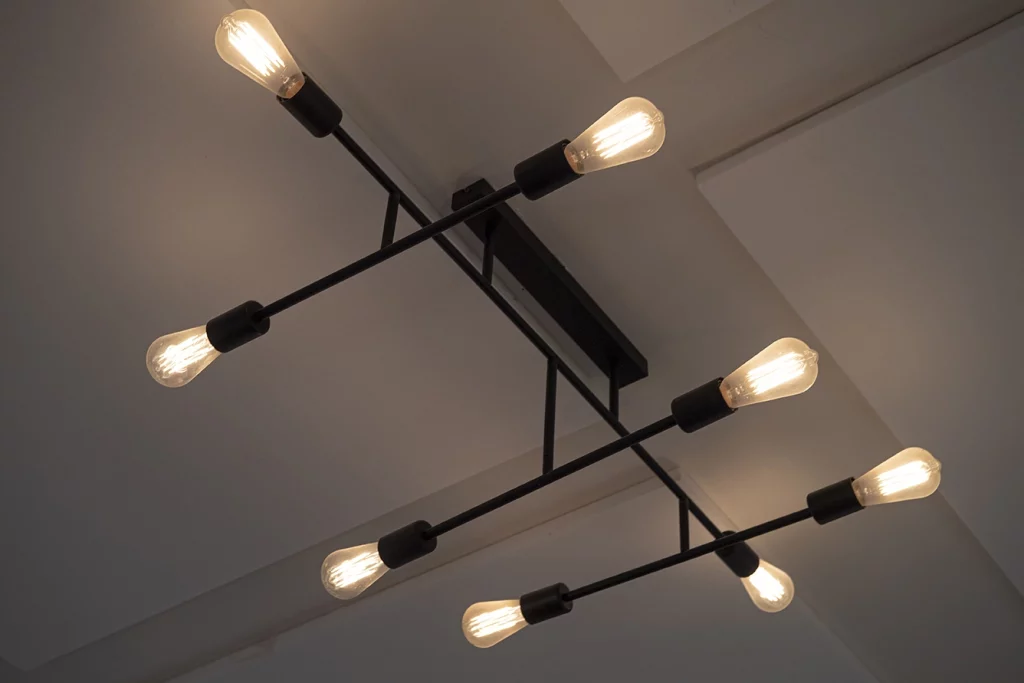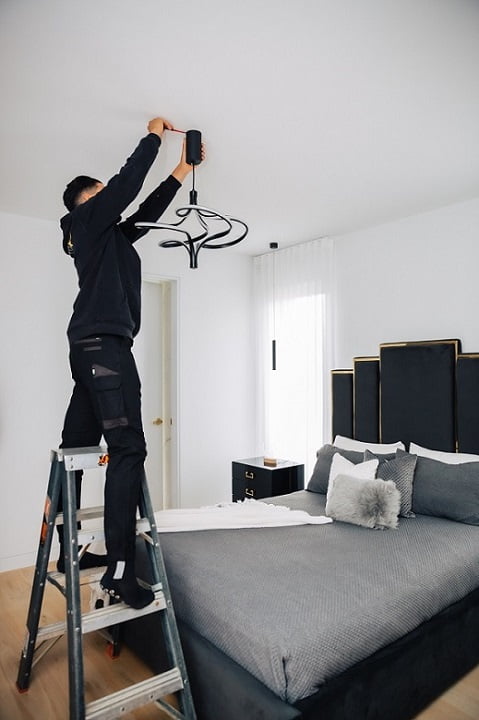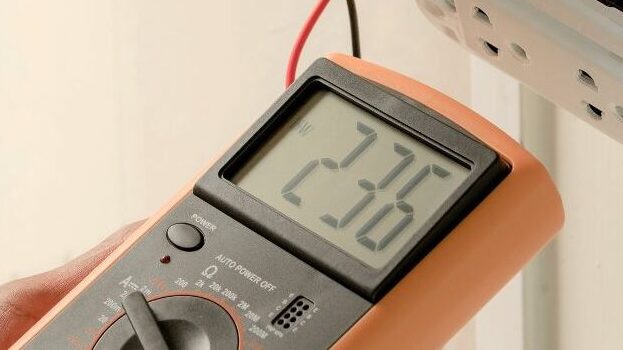Discover the Key Factors Behind Your LED Light’s Unanticipated Dimming
Immediate Solutions:
If your LED light has unexpectedly dimmed, it is usually caused by a voltage drop, circuit overload, heat issues, poor connections, or even using substandard LED bulbs. Continue reading for comprehensive strategies to effectively rectify this problem.
Understand the Top 5 Reasons Why Your LED Lights Are Dimming and How to Fix Them
LED lights are renowned for their impressive longevity, often promised to last for years without significant performance degradation. Yet, some may fail to endure even a single season of use. Whether you are dealing with downlights in your kitchen, decorative garden lights, or festive Christmas LED lights, the experience of sudden dimming can be both frustrating and commonplace. This comprehensive guide delves into the primary causes of LED dimming and offers safe, effective troubleshooting methods to restore your lighting to its peak brightness.

1. Understanding How Voltage Drops Lead to Unexpected LED Dimming
The most prevalent cause behind LED lights dimming unexpectedly is a significant voltage drop. When the voltage delivered to the light fixture falls below the necessary threshold for optimal LED operation, the brightness will noticeably diminish. But what specific factors contribute to this issue? Here are some common culprits:
- Temporary interruptions in the local power grid
- Overloaded local circuits
- Long wiring distances using insufficiently sized cables
- Faulty switchboards or subpar connections
Voltage drops can pose considerable challenges, especially with budget LED lights that typically lack proper voltage regulation, making them particularly sensitive to even minor voltage fluctuations. To ensure reliable performance, always consider upgrading to higher-quality products designed to withstand these variations.
Also Read: 10 Ways to Save On Power And Energy Costs
2. Identifying Overloaded Circuits in Older Residential Properties
Exceeding the load capacity of your electrical circuits by connecting too many appliances or devices can place significant stress on your power supply. When a circuit struggles to manage the overall demand, the voltage distribution among devices becomes uneven, resulting in dimming lights, particularly for sensitive LEDs. This issue is particularly prevalent in older homes constructed before the rise of modern, energy-intensive technologies. Signs of overloaded circuits often include:
- Flickering lights
- Buzzing switches
- Dimming lights, especially in affordable LED models that may lack essential protective features.
Request a Quote and Inquire About Our FREE Electrical Inspections
3. How to Diagnose Loose Connections and Deteriorating Wiring
Insufficient power delivery can often occur due to loose fittings or aging electrical cables. If your light exhibits flickering or dimming when you adjust a switch or other devices, this may indicate the presence of loose connections. Here are some critical areas to examine:
- Ensure the bulb is properly seated in its socket
- Watch for flickering at the wall switch
- Look for burn marks, discoloration, or strange buzzing sounds around the fixture
Important: Many low-cost LED lights utilize thin or substandard internal wiring, making them more susceptible to failure due to heat or physical movement. Regular inspections and maintenance can help prevent unexpected issues from arising.
Also Read: Keep Your Pets Safe Around Electricity
4. Understanding the Potential Hazards of LED Overheating
While LEDs generate less heat than traditional incandescent bulbs, they still necessitate efficient heat dissipation to function correctly. If an LED overheats, it will automatically reduce its brightness to protect itself from damage. Several factors can contribute to overheating:
- Enclosed light fixtures that obstruct airflow
- Defective heat sinks, particularly in budget models
- Excessively high ambient temperatures
- Insufficient air circulation surrounding the fixture
If your LED housing feels hot to the touch, it is likely suffering from overheating. This issue is notably prevalent with inexpensive, poorly ventilated LED downlights or garden lights installed in direct sunlight without adequate thermal protection.

5. How Lumen Depreciation Can Result in Gradual LED Dimming Over Time
Even high-quality LEDs will inevitably experience a gradual loss of brightness with extensive usage, a phenomenon known as lumen depreciation. Quality LEDs can maintain about 70% to 90% of their original brightness after approximately 50,000 hours of operation. In contrast, cheap LED products may begin to dim after as little as 5,000 to 10,000 hours of use, often doing so unevenly. If your light appears to be:
- A budget model, it may simply be approaching the end of its lifespan.
- Several years old and heavily utilized
- Experiencing frequent usage and high demand
Why Budget LED Lights Fail Prematurely
During festive seasons, the market is flooded with inexpensive LED lights available in various forms such as string lights, downlights, garden features, and more. However, these products often come with significant risks, including:
- Inconsistent voltage tolerance: making them more susceptible to flickering and dimming
- Poor heat management: heightening the chances of overheating
- Low-quality drivers: which cannot effectively regulate electrical current
- Lack of weatherproofing: making them unsuitable for outdoor usage
Holiday Tip: When selecting LED Christmas lights, choose products that feature:
- IP65+ waterproof rating
- Certification compliance marks (e.g., RCM)
- Reputable brands (steer clear of lesser-known bargain brands)
While opting for cheaper lights may seem like a cost-saving measure initially, they can lead to higher expenses over time concerning replacements, safety, and long-term frustration.
Effective Strategies for Resolving Dimming LED Lights
Examine for Loose Connections and Signs of Overheating
Start by meticulously inspecting your light fixture. Is the bulb securely fastened in its socket? Are there any visible signs of wear, corrosion, or damage? If you notice anything out of the ordinary, do not attempt to repair it yourself, especially if wires are exposed or if the fixture shows signs of burning or melting. Carefully touch the fixture; if it feels excessively hot—think “it-could-cook-an-egg” hot—that indicates a serious concern. Overheating fixtures pose significant hazards and may require replacement.
Need assistance? We are Beacon Lighting Recommended Electricians, specializing in the safe installation and replacement of LED fittings. Whether you’re located in Braybrook, Yarraville, or nearby areas, Electrx can efficiently resolve the issue for you.
Utilize a Multimeter to Assess Voltage Levels
If your LED is dim due to inadequate voltage, using a multimeter will help pinpoint the issue. Testing the voltage at your LED fixture will reveal whether your lights are receiving the correct power supply. Compare the measured voltage with the recommended specifications for your particular LED lights. Should the voltage be lower than necessary, this may explain the dimming. If the voltage consistently registers below the required level, you might be facing a more critical electrical issue and should reach out to a qualified electrician for further assessment.
If you find low voltage across multiple fittings, there is likely a larger wiring or switchboard issue that needs to be addressed.

Review the Dimmer Switch Settings
We frequently receive inquiries like the following:
“Why is my light dim?”
Us: “Do you have a dimmer switch?”
Them: “…oh.”
Ensure that no unintentional adjustments have been made to the dimmer switch, and verify for any compatibility issues with your specific LED model.
Test the Circuit by Turning Off Other Appliances
Next, try switching off other devices connected to the same circuit as your LED lights. If your lights brighten as a result, you may be facing an overloaded circuit. Consider implementing the following strategies:
- Redistributing devices across different circuits to balance the load
- Upgrading your switchboard to enhance performance
- Replacing budget LEDs with more efficient and reliable models
Also Read: Electrical Upgrades For Your Office
Replace the LED Bulb if Necessary
If none of these troubleshooting techniques resolve the issue, your LED bulb may simply be reaching the end of its operational lifespan. To test this, replace it with another LED bulb from your home. If the replacement bulb restores full brightness, the old bulb likely needed to be replaced. In this case, go ahead and purchase a new high-quality LED bulb. However, if switching bulbs does not fix the problem, the underlying cause is likely related to another aspect of your electrical system.
Essential Information Regarding LED Dimming Problems
So, what could be the reason behind your LED light suddenly dimming? The potential causes might include:
- Voltage drops adversely affecting performance
- Loose connections interrupting the flow of electricity
- Heat accumulation compromising functionality
- Circuit overload resulting from excessive appliance usage
- Or the LED itself—especially if it is a budget model
With this detailed guide, you are now equipped with the knowledge to identify what to check—and how to rectify the issues at hand.
However, if you feel uncertain or notice any signs of electrical damage, never compromise on safety when it comes to electrical systems.
Allow Electrx to Provide Expert Assistance
We are licensed electricians and recognized installers for Beacon Lighting. Our services include:
- Testing and replacement of LEDs to ensure safety and reliability
- Circuit diagnosis to accurately identify and resolve issues
- Solutions for addressing overload and overheating challenges
- Safe, long-lasting electrical upgrades tailored for your home
If you have any doubts or concerns regarding electrical matters, it is always best to consult a professional electrician, such as Electrx Electricians. Contact us today for expert assistance.

Common Questions About LED Troubleshooting
Q: Why is my new LED bulb already dim?
A: This may be due to a voltage drop, faulty wiring, or a low-quality LED that lacks sufficient voltage regulation. Consider replacing it with a high-quality LED to determine if that resolves the issue.
Q: Do cheap LED lights dim faster?
A: Yes, budget LEDs often lack adequate heat sinks and stable drivers, leading to premature lumen loss, flickering, and dimming—particularly in hot or outdoor environments.
Q: Why do my Christmas lights flicker and fade?
A: Seasonal LED string lights are frequently constructed using lower-grade materials. Environmental exposure, overuse, and power surges can all contribute to dimming. Always select outdoor-rated, certified lighting to ensure durability and reliability.
Q: Can I troubleshoot dimming LED lights by myself?
A: You can start by checking fittings, testing voltage levels, and replacing the bulb. However, if the problem persists—especially across multiple fittings—contact a licensed electrician for professional assistance.
The Article: LED Light Dim? Discover the Reasons Behind It first appeared on https://writebuff.com
The Article LED Light Dim: Uncover the Causes of Dimming Issues Was Found On https://limitsofstrategy.com

